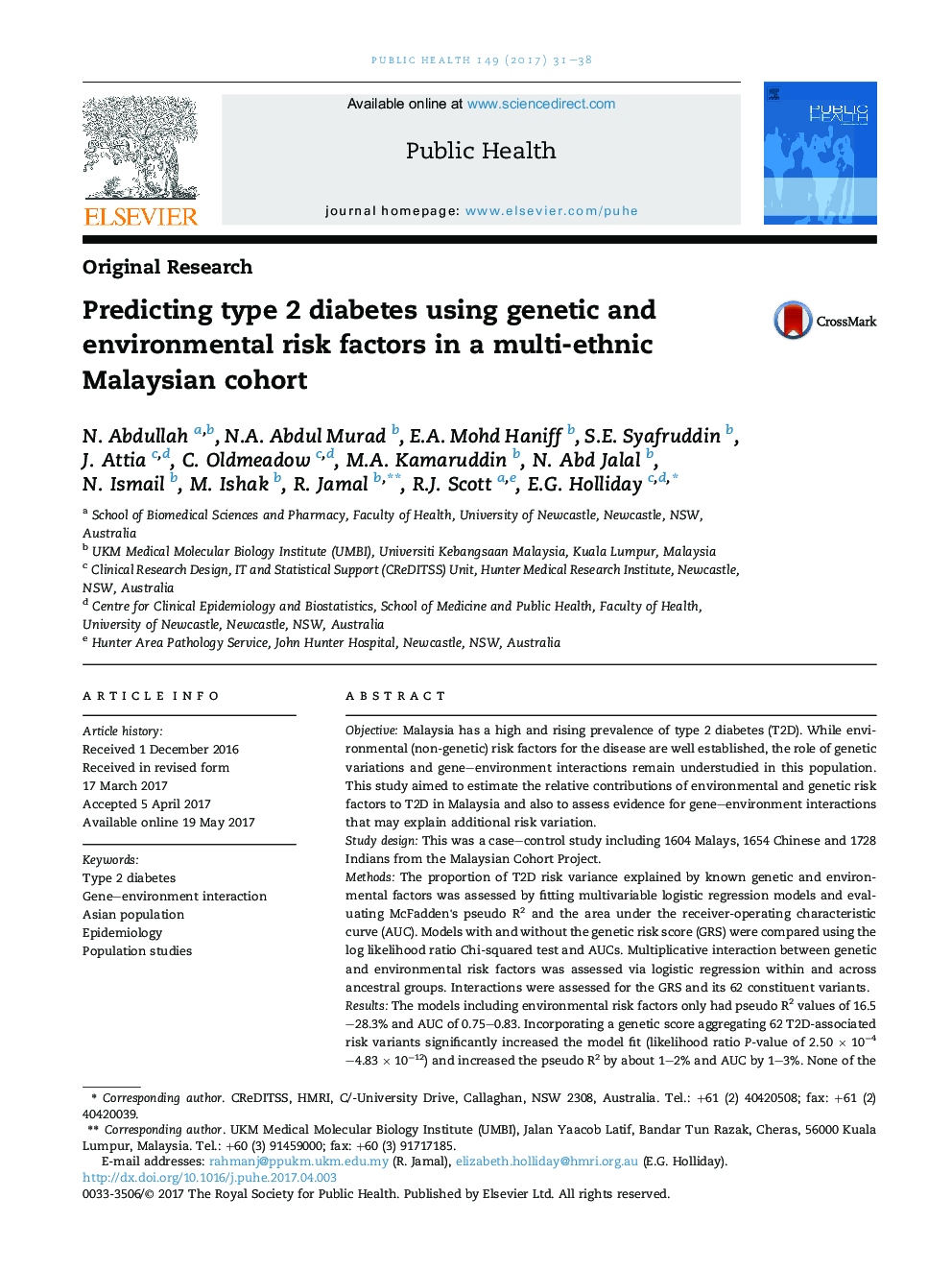| کد مقاله | کد نشریه | سال انتشار | مقاله انگلیسی | نسخه تمام متن |
|---|---|---|---|---|
| 5122867 | 1487194 | 2017 | 8 صفحه PDF | دانلود رایگان |
- We report a large-scale study of gene-environment interaction for type 2 diabetes in a Malaysian sample.
- Adding a genetic risk score to a model with known environmental risk factors increased the variance explained.
- We observed a gradient of genetic effects across strata of body mass index (BMI).
- A total 33 single-nucleotide polymorphisms (SNPs) showed evidence of interaction with lifestyle risk factors at p < 0.05.
ObjectiveMalaysia has a high and rising prevalence of type 2 diabetes (T2D). While environmental (non-genetic) risk factors for the disease are well established, the role of genetic variations and gene-environment interactions remain understudied in this population. This study aimed to estimate the relative contributions of environmental and genetic risk factors to T2D in Malaysia and also to assess evidence for gene-environment interactions that may explain additional risk variation.Study designThis was a case-control study including 1604 Malays, 1654 Chinese and 1728 Indians from the Malaysian Cohort Project.MethodsThe proportion of T2D risk variance explained by known genetic and environmental factors was assessed by fitting multivariable logistic regression models and evaluating McFadden's pseudo R2 and the area under the receiver-operating characteristic curve (AUC). Models with and without the genetic risk score (GRS) were compared using the log likelihood ratio Chi-squared test and AUCs. Multiplicative interaction between genetic and environmental risk factors was assessed via logistic regression within and across ancestral groups. Interactions were assessed for the GRS and its 62 constituent variants.ResultsThe models including environmental risk factors only had pseudo R2 values of 16.5-28.3% and AUC of 0.75-0.83. Incorporating a genetic score aggregating 62 T2D-associated risk variants significantly increased the model fit (likelihood ratio P-value of 2.50Â ÃÂ 10â4-4.83Â ÃÂ 10â12) and increased the pseudo R2 by about 1-2% and AUC by 1-3%. None of the gene-environment interactions reached significance after multiple testing adjustment, either for the GRS or individual variants. For individual variants, 33 out of 310 tested associations showed nominal statistical significance with 0.001Â <Â PÂ <Â 0.05.ConclusionThis study suggests that known genetic risk variants contribute a significant but small amount to overall T2D risk variation in Malaysian population groups. If gene-environment interactions involving common genetic variants exist, they are likely of small effect, requiring substantially larger samples for detection.
Journal: Public Health - Volume 149, August 2017, Pages 31-38
